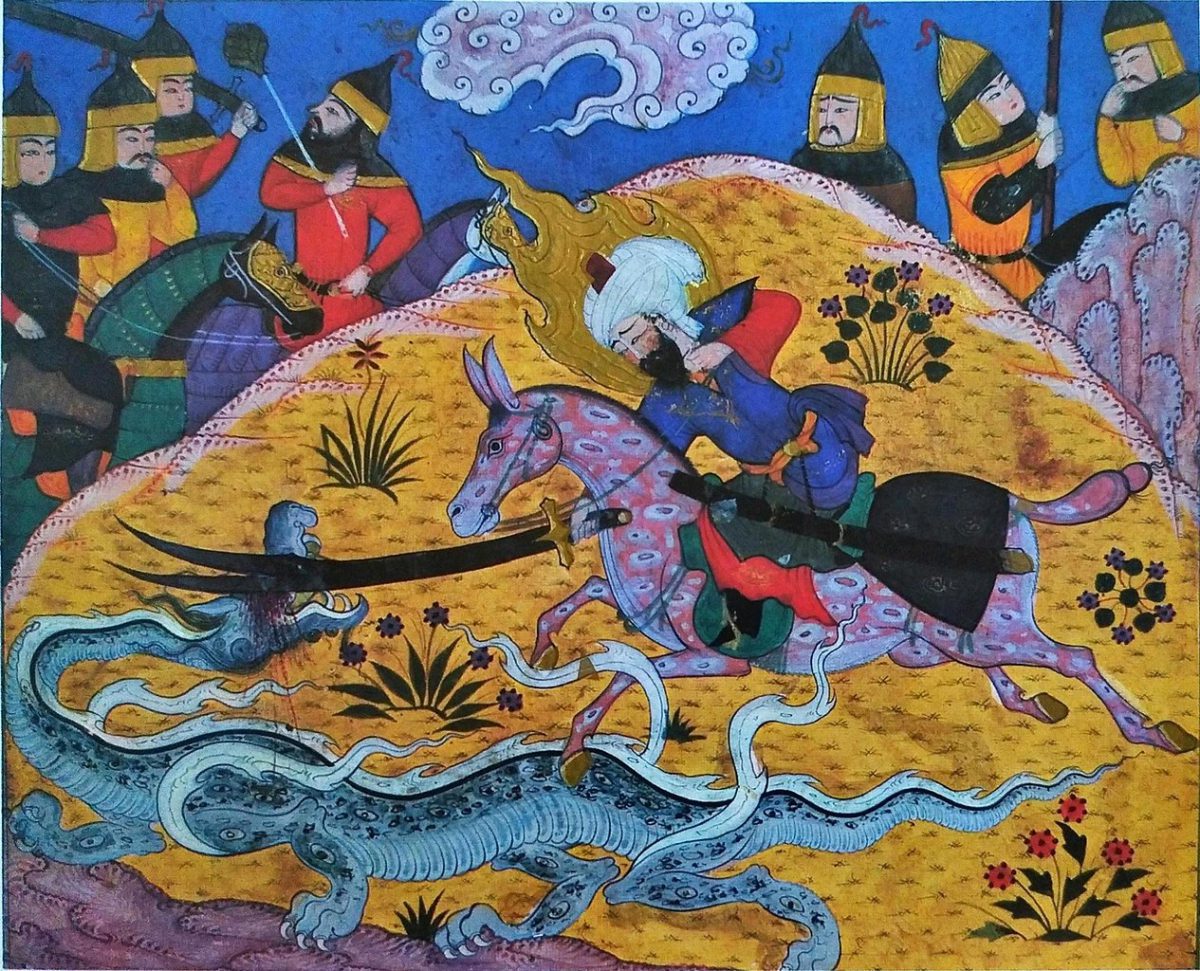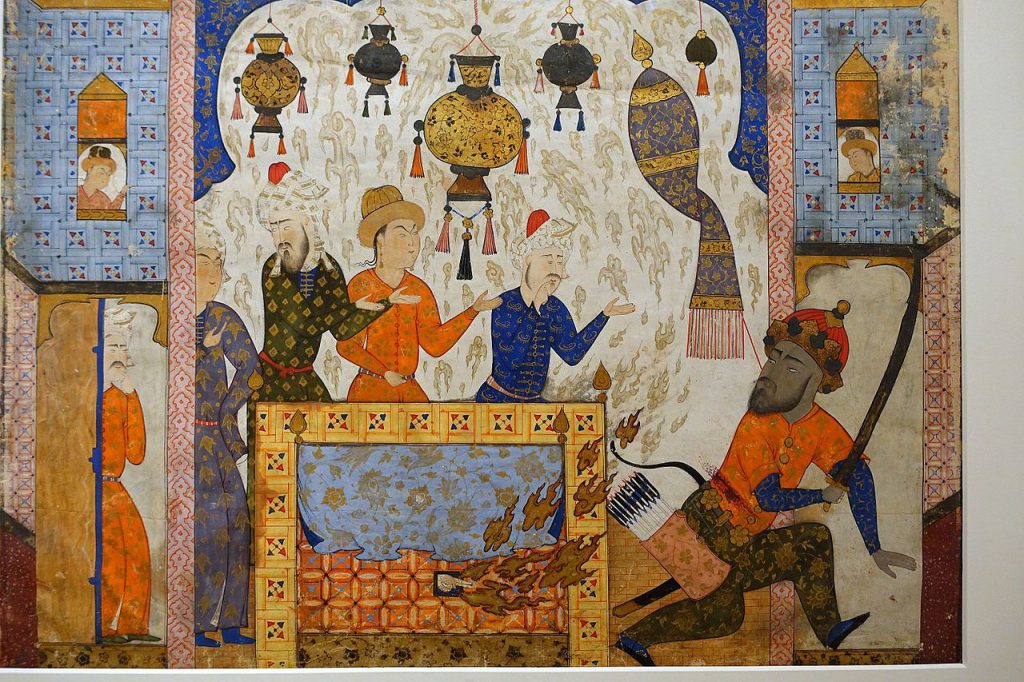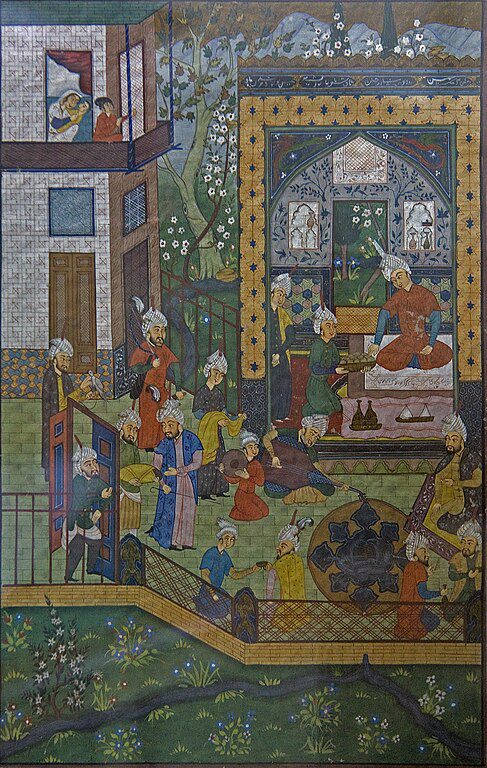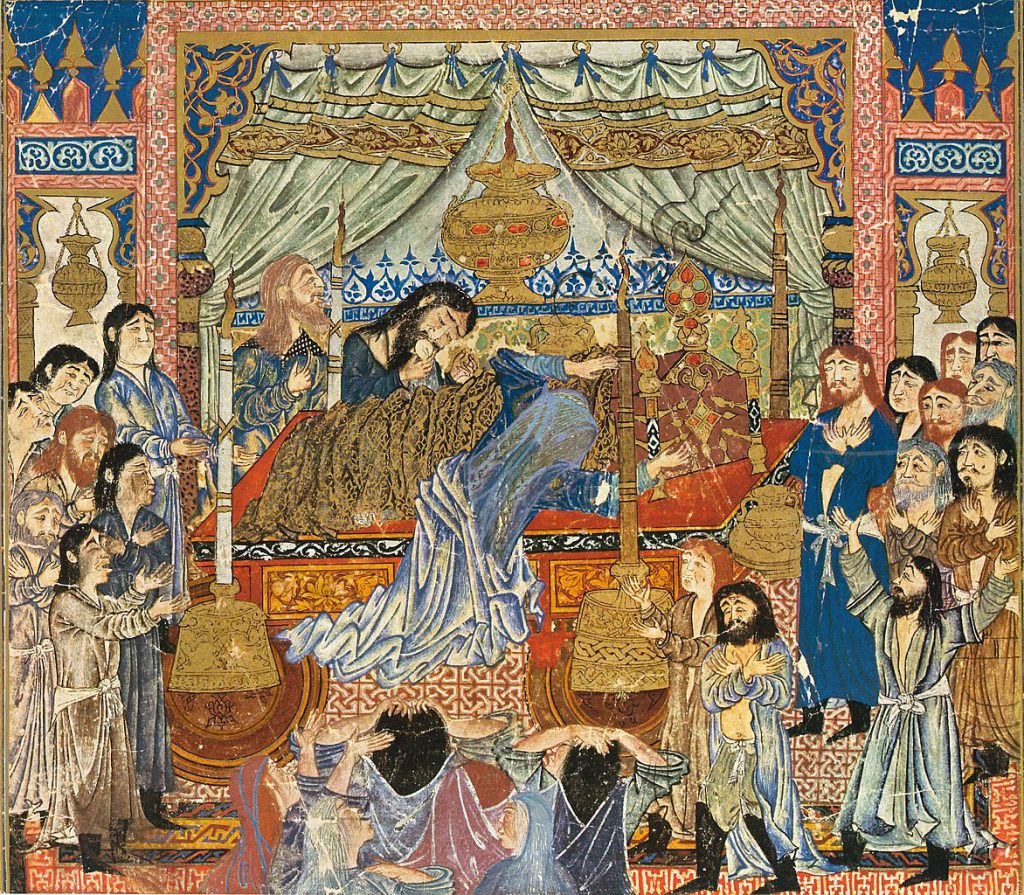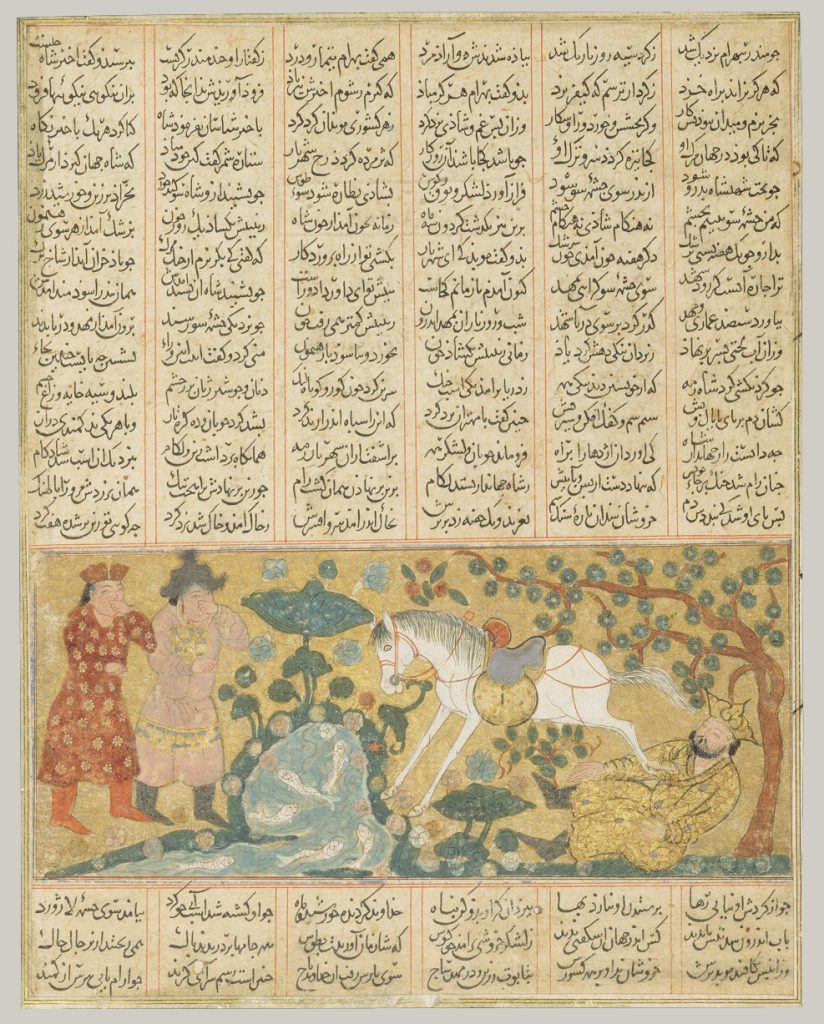Table of Contents
Persian miniature painting captivates viewers with its exquisite detail and rich storytelling. Each piece, though modest in size, is a vibrant tapestry of color and intricate design that draws the eye into a world of imagination. Originally crafted to enhance manuscripts, these miniatures have transcended their initial purpose, evolving into standalone artworks that continue to enchant audiences. The artistry reflects a unique vision where figures and objects dance across the canvas, crafted not with strict adherence to realism, but through a stylized lens that captures the essence of the narrative.
The themes in these miniatures often weave together threads of mythology, poetry, and the opulence of royal life, creating a harmonious blend of naturalism and surrealism. Artists skillfully utilize perspective to invite the viewer into a dreamlike realm, where stories unfold in vibrant hues and delicate lines. This enchanting art form not only preserves the cultural heritage of Iran but also serves as a testament to the timeless human desire to convey stories and emotions through visual expression.
History of Persian Miniature
Between the 13th and 17th centuries, Persian miniature painting flourished, drawing deep inspiration from the rich tapestry of literary masterpieces such as Firdowsi’s Shahnama and Nizami’s Khamsah. This period marked a pivotal moment for Persian art, particularly under the auspices of the Ilkhanid dynasty, which nurtured a vibrant culture of book illustration. Artists meticulously illuminated texts, breathing life into stories with their detailed imagery, effectively transforming literary works into visual feasts.
The art form reached unparalleled heights during the Timurid era in the 14th and 15th centuries, with cities like Tabriz and Herat emerging as bustling hubs of manuscript creation. This period was characterized by a remarkable burst of creativity, where artists developed distinctive styles that blended intricate detail with vivid color palettes. The patronage of the Timurid rulers not only elevated the status of miniature painting but also solidified its place as a vital expression of Persian cultural identity, intertwining the realms of literature and visual art in a harmonious celebration of storytelling.
Characteristics of Persian Miniature
Intricate Detail and Vibrant Aesthetics
Persian miniatures are known for their meticulous craftsmanship and vivid colors that captivate viewers.
Rich Color Palette
Artists use bright and pure colors, with prominent hues like gold and lapis lazuli blue, selected for both visual impact and symbolic meanings.
Meticulous Techniques
Layering: Colors are carefully layered to create depth.
Delicate Brushwork: Fine lines are achieved using brushes made from animal hair, allowing for intricate detailing.
Small Scale, Big Complexity
Despite their modest size, these paintings contain immense detail, with each element thoughtfully rendered.
Diverse Themes
Literary Inspirations: Common subjects include scenes from Persian epics, royal courts, and classical tales.
Unique Perspective: Unlike Western art, Persian miniatures feature a flattened, two-dimensional space where figures appear in profile, and their size indicates importance.
Symbolism
Color Significance: Colors and shapes carry deep meanings; for example, green often symbolizes paradise.
Narrative Elements: The intertwining of human figures, animals, and nature conveys moral or spiritual messages, often derived from Sufi mysticism.
Recurring Motifs
Landscapes: Idealized representations of nature, including mountains and gardens, imbued with symbolic meaning.
Court Scenes: Depictions of royal feasts and audiences that highlight the opulence of the ruling class.
Mythical Creatures: Figures like the Simurgh and dragons drawn from Persian mythology.
Floral and Geometric Patterns: Decorative elements that hold symbolic significance and enhance the composition.
Literary Scenes: Illustrations of famous works such as the Shahnameh and the romantic tales of Layla and Majnun.
Function of Persian Miniature
At its core, Persian miniature painting served as a vital form of illustration, bringing literary narratives to life through captivating visuals. These delicate artworks transformed complex plots into engaging images, enhancing the reader’s experience and making stories more accessible. By marrying visual artistry with literary themes, miniature painting created a seamless blend of artistic and poetic expression, enriching the overall narrative.
As this art form evolved, it developed a profound connection with poetry, resonating deeply with the emotions and themes conveyed in the texts. Each brushstroke not only illustrated the story but also evoked the sentiments embedded in the verses, creating a dialogue between the visual and the verbal. This interplay allowed viewers to engage with literature on multiple levels, making Persian miniatures a cherished component of cultural storytelling that transcended mere decoration to become an integral part of the literary tradition.
Techniques and Materials of Persian Miniature
Surface Preparation
High-quality handmade paper coated with a fine layer of starch.
Burnished to create a smooth canvas for painting.
Drawing and Composition
Detailed sketches using pencil or charcoal.
Complex compositions featuring multiple figures and landscapes.
Color Application
Layering technique: lighter shades applied first, followed by darker tones.
This creates depth and visual richness in the artwork.
Materials Used
Paper: Handmade, high-quality paper essential for fine brushwork.
Pigments: Derived from natural sources (e.g., lapis lazuli for blue, cochineal for red), ground into powder and mixed with binding agents.
Brushes: Made from animal fur (e.g., squirrels, goats) for precision detailing.
Detailing and Finishing
Fine brushes used for intricate details in facial expressions and patterns.
Gold leaf often added for luxurious embellishment, particularly in manuscripts.
Literary Works and Persian Miniature
Over the last millennium, a wealth of literary masterpieces has inspired Persian miniature artists, creating a vibrant interplay between text and image.
Shahnameh (The Book of Kings)
Ferdowsi’s Shahnameh is an epic work that weaves together history and legend, serving as a foundational text in Persian culture. Its grand narratives have inspired countless miniatures that depict heroic figures and pivotal moments, bringing the text to life in vibrant colors and intricate details.
Khamsa (Five Stories)
Nezami’s Khamsa comprises five romantic tales, celebrated for their lyrical beauty. This collection not only captivated its contemporary audience but also left a lasting impression on artists, who illustrated its enchanting narratives with delicate imagery that echoes the emotions of the poetry.
Golestan and Bustan
The 13th century brought forth luminaries like Saadi, whose Golestan and Bustan combined moral teachings with lyrical elegance, making them essential sources for miniature painters. Golestan, with its entertaining anecdotes and proverbs, and Bustan, a didactic poem filled with moral lessons, offered rich narratives ripe for illustration.
Poetic Renaissance
As the art form progressed, the 14th century saw the emergence of celebrated poets like Amir Khosrow Dehlavi and Hafez, whose works further enriched the literary landscape. By the 15th century, Jami’s Haft Owrang (The Seven Thrones) harmonized various literary styles, showcasing a diverse tapestry of themes that artists eagerly translated into the intricate world of Persian miniatures, bridging the gap between literature and visual storytelling.
Top Cities for Persian Miniature
When delving into the world of Persian miniature art, several cities in Iran emerge as vibrant hubs that have significantly shaped this exquisite tradition.
- Isfahan: Often hailed as the cultural heart of Iran, Isfahan is celebrated for its rich artistic legacy, where intricate miniatures tell captivating stories through delicate designs. The artisans of Isfahan have mastered the art form, infusing their works with a unique blend of creativity and historical depth, making the city a cornerstone of miniature painting.
- Tabriz: Tabriz stands out as a historical epicenter for both Persian literature and art. During the Ilkhanid period, it played a crucial role in the advancement of miniature painting, with its artists known for their innovative techniques and detailed narrative scenes.
- Shiraz: With deep roots in poetry, Shiraz became a significant center for this art during the Zand dynasty, often showcasing lush landscapes and romantic motifs. The city’s artistic heritage is intertwined with its literary legacy, making it a vital part of the miniature painting landscape.
- Tehran: As the bustling capital, Tehran houses numerous museums—such as the National Museum of Iran and the Reza Abbasi Museum—that feature remarkable collections of Persian miniatures. These institutions provide a glimpse into the evolution of this art form, preserving its history for future generations.
- Mashhad: Renowned for its religious significance, Mashhad has also preserved the tradition of miniature painting. Many of its miniatures reflect spiritual themes that resonate through its artistic expressions, contributing to the continuation of this rich cultural heritage.
Each of these cities contributes a distinct flavor to the rich tapestry of Persian miniature art, highlighting Iran’s diverse cultural heritage.
Famous Miniature Artists
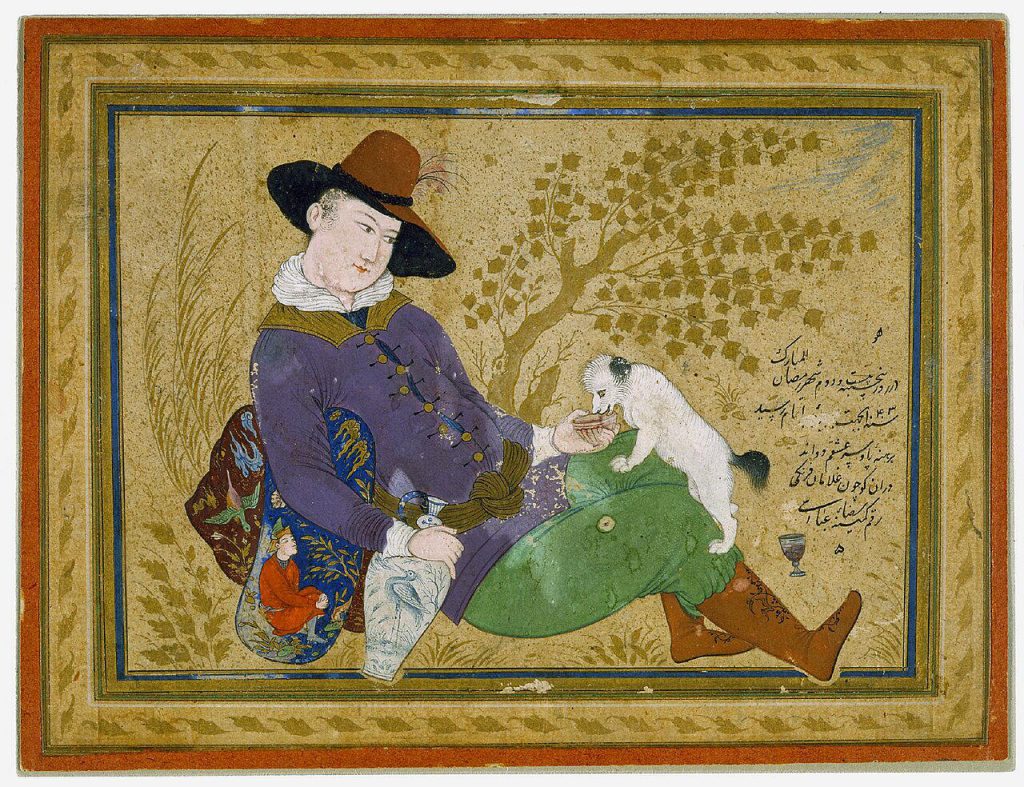
Reza Abbasi
Reza Abbasi, a towering figure of the Safavid era, transformed Persian miniature art during his tenure under Shah Abbas I. As the head of the royal Kitabkhana, he not only oversaw the production of exquisite manuscripts but also pioneered a distinctive Safavid style characterized by graceful figures and expressive faces. His famous works, such as “Rostam Killing the White Demon” and “Two Lovers,” showcase a softer color palette that enhances the emotional depth of his subjects. Abbasi’s innovative approach to depicting the human form introduced a naturalistic flair to miniature painting, leaving a lasting legacy that influenced not only painting but also calligraphy and various decorative arts within the Safavid period and beyond.
Kamāl ud-Dīn Behzād
Another luminary of Persian miniature painting is Kamāl ud-Dīn Behzād, revered for his contributions during the Timurid and early Safavid dynasties. Working primarily within the Herat School, Behzad is celebrated for masterpieces like “The Seduction of Yusuf” and “The Construction of the Castle of Khawarnaq,” which exemplify his dynamic compositions and intricate storytelling. His ability to convey complex narratives through detailed imagery elevated Persian miniature painting to new heights, influencing countless artists who followed.
Mir Sayyid Ali
In a similar vein, Mir Sayyid Ali, active in the Safavid period, brought his refined style to life through works like “Faridun Crosses the River Dijla,” which are known for their elegant figures and lush, expressive landscapes. His lyrical quality and aesthetic finesse played a pivotal role in shaping the Safavid miniature tradition, inspiring future generations of artists to explore the deep emotional and narrative potential of this art form.
FAQs about Persian Miniature
Q1: What is a Persian miniature?
A1: A Persian miniature is a small, detailed painting that often depicts scenes from mythology, poetry, or royal life, crafted with vibrant colors and intricate designs.
Q2: What is the oldest Persian miniature?
A2: The oldest illustrated Persian manuscript from the Mongol period is the Tarikh-i Jahangushay (1290). It was ordered by the Mongol leader Arghun Aqa and is one of the first examples of the “Metropolitan style” from the Mongol Ilkhanid court. This was followed by the Manafi’ al-hayawan manuscript, created between 1297 and 1299.
Q3: What are the characteristics of Persian miniatures?
A3: For example, common features of Persian miniature paintings include bright colors, round faces, intricate fabric and carpet designs, mountainous scenes, and images without perspective or shadows. In terms of technique, most of the work was typically done by two artists.
Q4: What are Islamic miniatures?
A4: Islamic miniatures are small paintings on paper, often used as illustrations in books or manuscripts, but they can also be standalone artworks. The earliest examples are from around 1000 AD, and the art form became more popular starting around 1200 AD.
Q5: How old is Persian art?
A5: Persian art and architecture is generally dated from around 550 BCE to 651 CE, covering the time from the start of the Achaemenid Empire to the fall of the Sassanian Empire. It was initially influenced by the older civilizations of Elam and Susiana in the area, as well as by nearby Mesopotamia.
Last Words: Discover the Best of Persian Miniature with a Customized Tour
Persian miniature painting is known for its beautiful detail and rich stories. Each small piece is full of color and intricate designs that create a vivid world. Originally made to decorate manuscripts, these miniatures have become independent artworks that still charm people today. This art form not only reflects Iran’s cultural heritage but also highlights the human desire to share stories and emotions through visuals.
If you want to experience the beauty of Persian miniature painting firsthand, a Customized Tour to Iran is the perfect way to go. To help you make the most of your journey, consider To Iran Tour. They specialize in designing Iran Tours and Travel Packages that cater to your individual preferences. Whether you’re an art enthusiast or simply curious about Iranian culture, they will create a plan that fits your interests and needs.
With To Iran Tour, you can rest assured that you’ll have a wonderful experience exploring the treasures of Persian miniature art and much more. We are here to help you make unforgettable memories during your Iran Tours!

